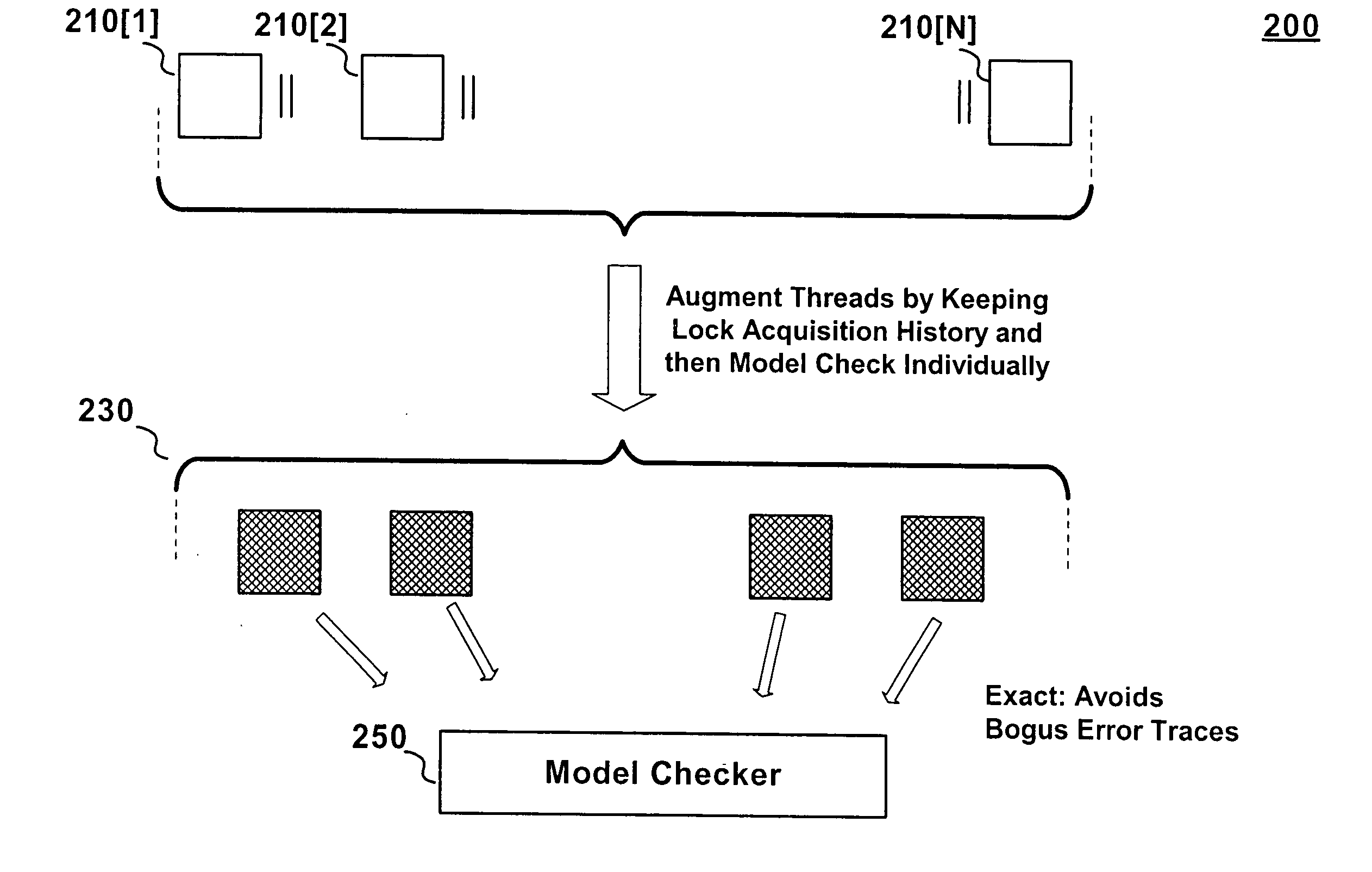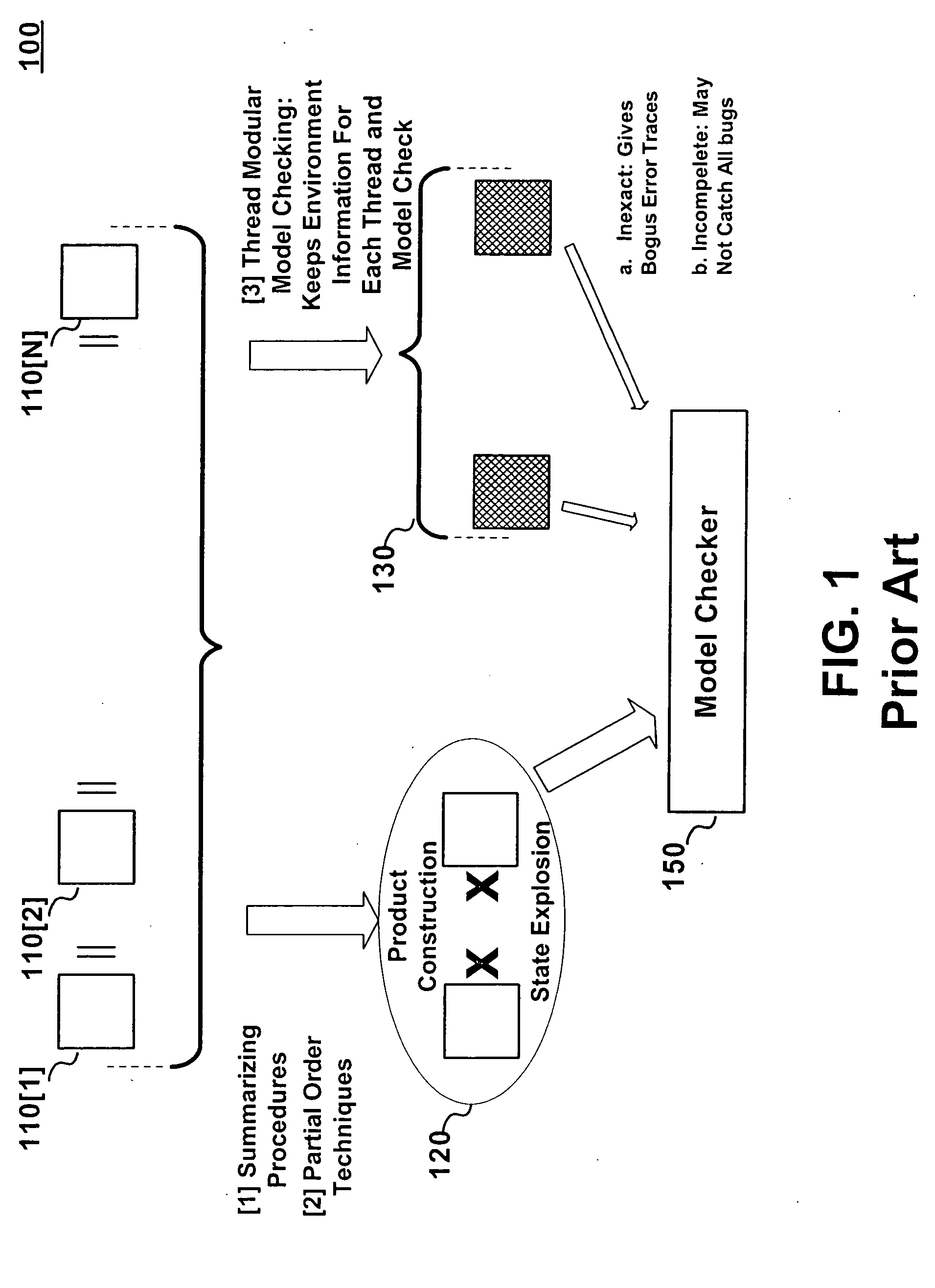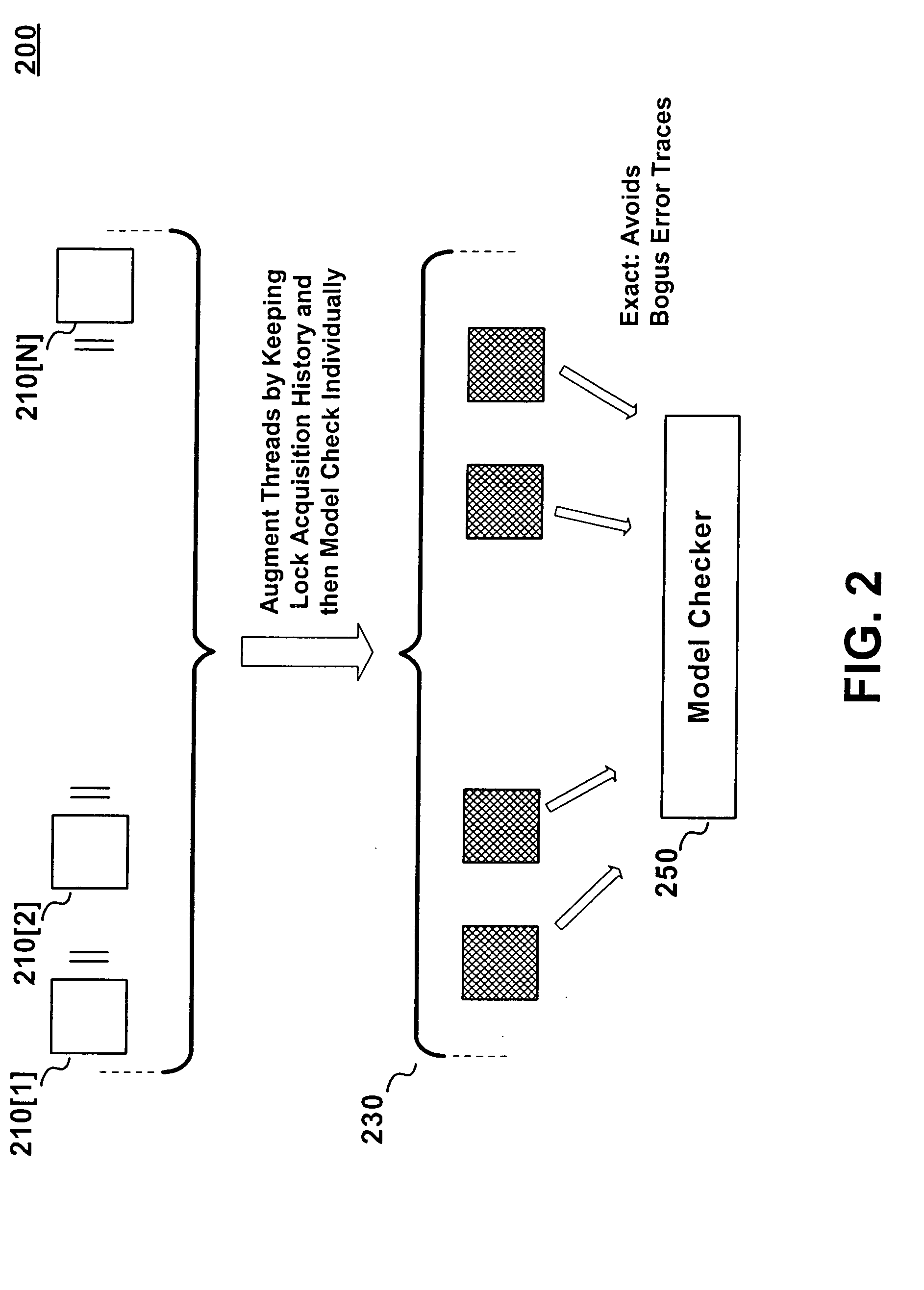Method for the static analysis of concurrent multi-threaded software
- Summary
- Abstract
- Description
- Claims
- Application Information
AI Technical Summary
Benefits of technology
Problems solved by technology
Method used
Image
Examples
Embodiment Construction
[0023] Before we begin our discussion of our inventive method, it is again worthy of note to distinguish our approach to that of the prior art. With reference to FIG. 1, there is shown a prior art approach to verification of concurrent software comprising a number of individual threads 110[1]. . . 110[N].
[0024] As is shown in that FIG. 1, when prior art approaches such as summarizing procedures, or partial order techniques were employed, a state explosion 120 problem occurs that makes model checking 150 very difficult or impossible. Similarly, when thread modular model checking approaches were employed wherein environment information for each thread was kept and then model checked 150 collectively, it lead to inexact (bogus errors) or an incomplete analysis.
[0025] In contrast, FIG. 2 outlines, in block diagram, our inventive approach to checking concurrent software comprising multiple threads 210[1]. . . 210[N], wherein augmented versions of the multiple threads are first construc...
PUM
 Login to View More
Login to View More Abstract
Description
Claims
Application Information
 Login to View More
Login to View More - R&D
- Intellectual Property
- Life Sciences
- Materials
- Tech Scout
- Unparalleled Data Quality
- Higher Quality Content
- 60% Fewer Hallucinations
Browse by: Latest US Patents, China's latest patents, Technical Efficacy Thesaurus, Application Domain, Technology Topic, Popular Technical Reports.
© 2025 PatSnap. All rights reserved.Legal|Privacy policy|Modern Slavery Act Transparency Statement|Sitemap|About US| Contact US: help@patsnap.com



